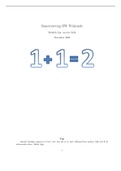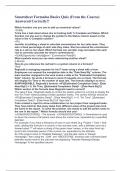Samenvatting
Samenvatting 'Maths in Motion' , Wiskunde voor Bewegingswetenschappen
- Vak
- Instelling
Een uitgebreide samenvatting met voorbeelden van het boek Maths in Motion van Theo de Haan, 3e editie. Alle hoofdstukken met voorbeelden uitgelegd. Aan het einde van elk hoofdstuk handige opgaves uit boek, zodat je niet alles hoeft te maken, maar wel alles snapt.
[Meer zien]




